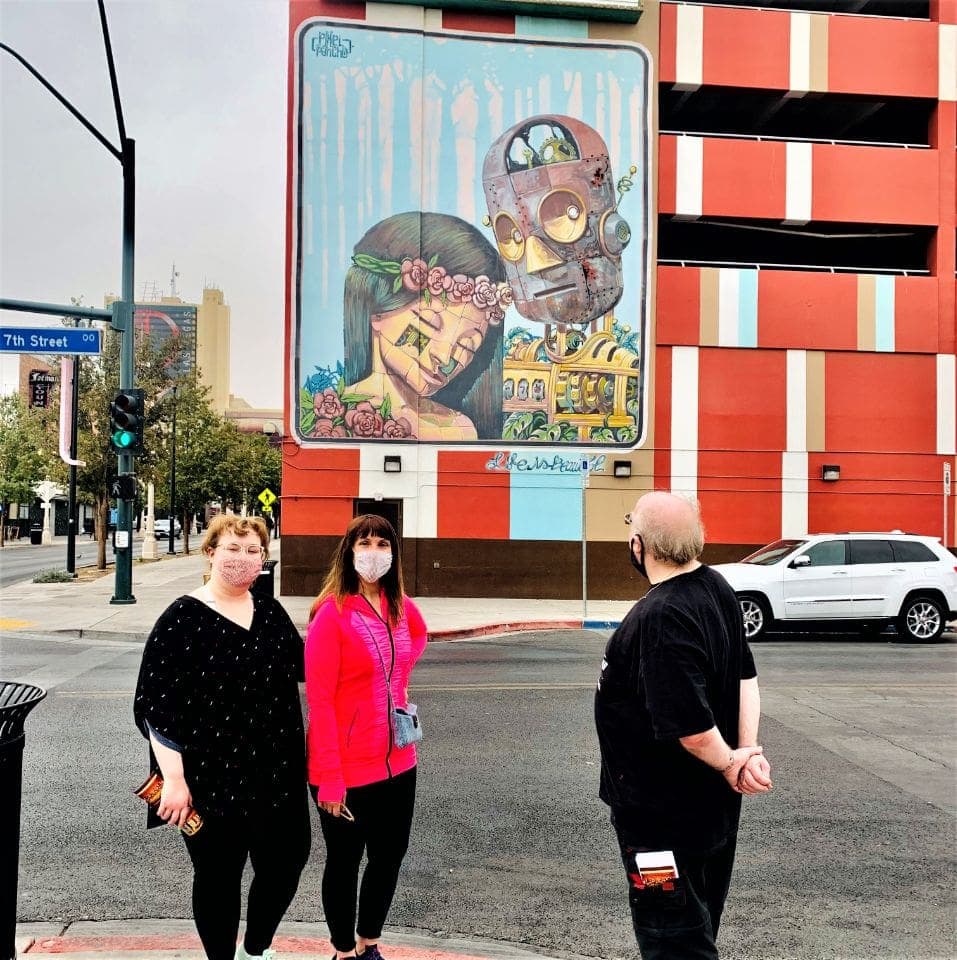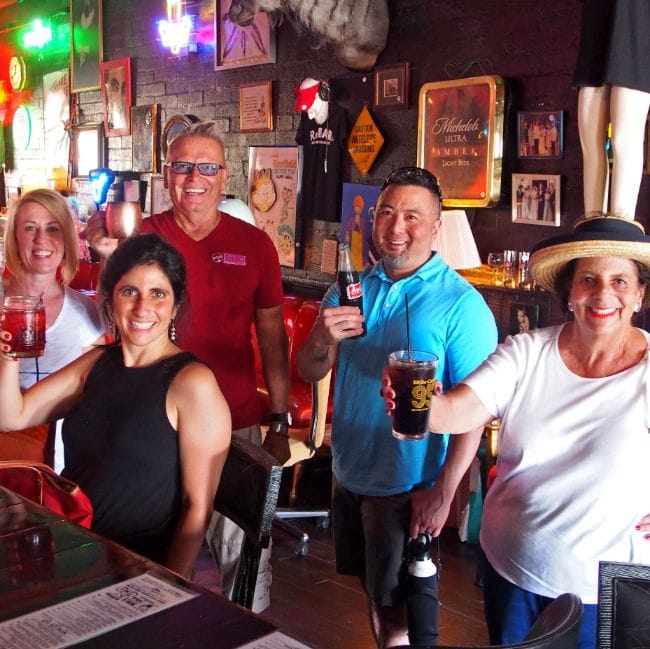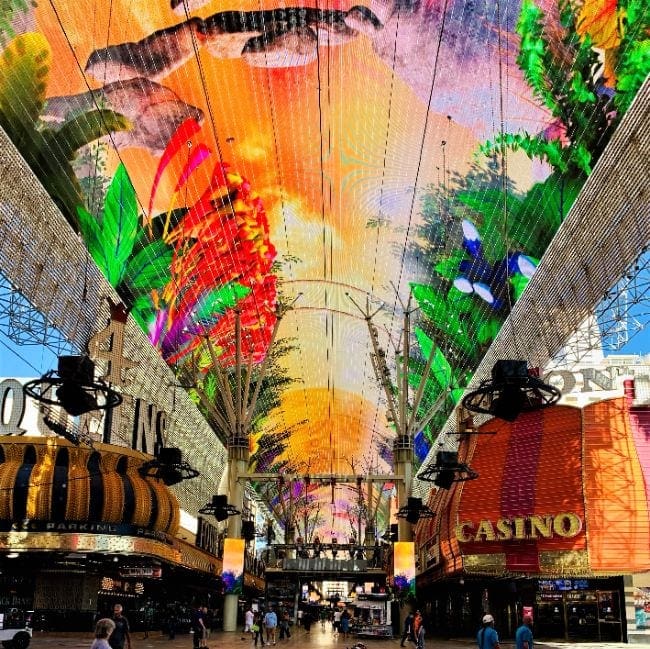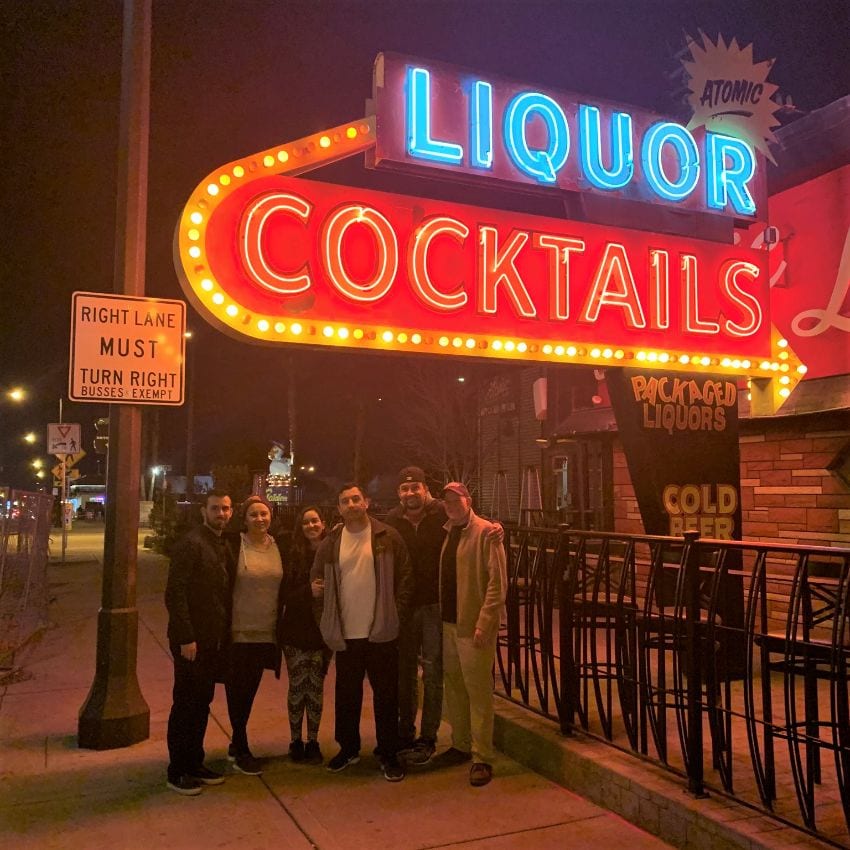A trio of visitors signed up for our 10 am tour on a brisk morning, two New Yorkers and a visitor from the UK. We were encouraged to have our first international tourist since the pandemic, as 50% of our customers used to be foreign visitors.
The tour began in the lobby of the Mob Museum with an introduction to two Las Vegas landmarks: first, the 1930s building that was once a federal courthouse and post office, now The National Museum of Organized Crime and Law Enforcement; and second, to the man mostly responsible for the Mob Museum, former Mayor Oscar B. Goodman, a criminal defense lawyer, who was once a famed Mob attorney in Las Vegas. (Mayor Goodman played himself in the movie, Casino.) The 2-hour walking tour through Downtown intersected, now and then, with references to the Mob, but the theme of the day was the old and new of Las Vegas.
On Third Street we saw the city’s Christmas Tree being installed, a reminder that Fremont is the Civic Plaza of Las Vegas. Our British visitor recalled visiting Las Vegas before the Fremont Street Experience (the electronic canopy) was built in 1995. In some ways the canopy is a bridge to the (mechanical) past and the (digital) present.
We strolled through Fremont, noting the early histories of the hotel casinos, their mob connections, and their collective celebration of mid-century modern architecture. And we saw lots of cowboys, (hats, boots, etc.) a reminder that Vegas is still a Western town, and that the National Finals Rodeo is taking place this week.
At Main Street Station Casino Hotel, with its fabulous collection of antiques, we took a detour – specifically for our British visitor – to the mezzanine to see a prized piece in the hotel’s collection, a billiard table that once belonged to Winston Churchill.
We ended our tour in Fremont East, a new entrepreneurial arts district featuring a splendid mural collection, including a work by Italian artist, Pixel Pancho, a curious portrait of a robotic couple in repose.




